
A few emerging colors and patterns within our breeds demonstrate this, making the world’s most colorful mammal – the cat – even more colorful! These colors and patterns developed in geographic isolation, that is, within specific areas of the world which have also been somewhat geographically or politically isolated from the West.
This article covers a few of these emerging colors and patterns, discussing primarily the presentation of these new-to-us colors and patterns in the cat, leaving a description of the mechanics behind them to a more scholarly resource.
The Golden Tabby Pattern in the Siberian
There’s Something New With the “Sunshine Gene”
The first thing to know about the golden tabby (and other golden colorations) in Siberians is that it is NOT genetically the same as the golden we see in Persians (and other breeds). In most breeds, “golden” describes a hair shaft that is solid gold and solid black on the tips. This pattern is dispersed evenly across the body; there is no tabby pattern. 1, 9
Golden tabby Siberians have a differently colored hair shaft. Here, the hair shaft is gold, but the tips range from a distinctly rich, warm brown to black and color is present across the body in any of the four tabby patterns. This difference is on the genetic level as the pattern is produced by the recently discovered CORIN gene. The golden tabby compresses the agouti pattern to the very end of the hair shaft. Within the breed, the distinction between these two patterns is made as “chinchilla golden” or “shaded golden” and the “golden tabby.”2
Bu hikaye Cat Talk dergisinin February 2024 sayısından alınmıştır.
Start your 7-day Magzter GOLD free trial to access thousands of curated premium stories, and 9,000+ magazines and newspapers.
Already a subscriber ? Giriş Yap
Bu hikaye Cat Talk dergisinin February 2024 sayısından alınmıştır.
Start your 7-day Magzter GOLD free trial to access thousands of curated premium stories, and 9,000+ magazines and newspapers.
Already a subscriber? Giriş Yap

Life With Patrick
Patrick and Mount Doom
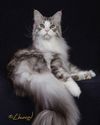
Feline Photographers Part 1
\"Cats never strike a pose that isn't photogenic.\" - Lillian Jackson Braun
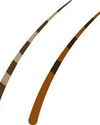
The Cat Fancy Alphabet
\"The Cat Fancy Alphabet\" is a new feature in Cat Talk. It highlights various terms and aspects of the cat fancy, educating fanciers new and old about our hobby.

UP CLOSE AND Purr-sonal
If there is one person, or even just a name, that anyone in CFA (Cat Fancier Association) knows, it would have to be Allene Tartaglia. It might be from her involvement with most aspects of the operations of CFA in her position of executive director. Or perhaps from her deep involvement with both the CFA Annual meeting and/or the International Show. Cat Talk thought it was time to learn more about one of the most key people in CFA.

Vision and Hearing Dysfunctions in Senior Cats
Just as people are challenged by having deficiencies with vision and hearing over time, so are senior cats. In senior cats, pet owners may notice their cats are no longer responding to them in the same way; however, it may be difficult to figure out.
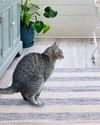
Senior Cats and House Soiling
Why is my cat no longer using its litter box? Cat soiling in the house is one of the most talked about issues for pet owners.
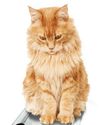
Nutrition for Our Senior Cats
From the time they are born, our kittens receive a tremendous amount of care, with diet being at the core of their growth and development.
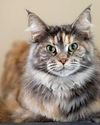
Fluffy's Sixteen and STILL Plays Like a Kitten!
Enrichment for Senior Cats
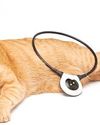
Alternative Arthritis Treatments for Cats
Just like humans, cats can experience arthritis. About 90% of cats over the age of 10 years experience osteoarthritis (OA) in at least one joint.1 It is a complex condition involving inflammation and degeneration of one or more joints and is sometimes referred to as degenerative joint disease (DJD). Cats with OA experience pain and inflammation in various joints that interfere with daily activities.

Checklist For What to Look For in Your Club's Next Show Venue
Show Manager To Ring One, Please